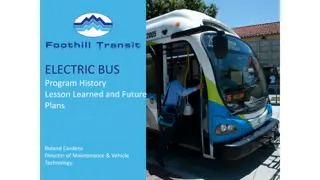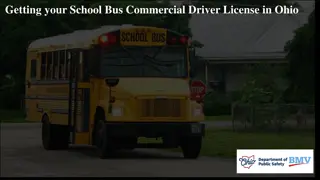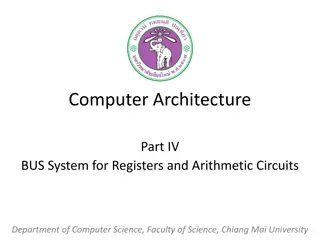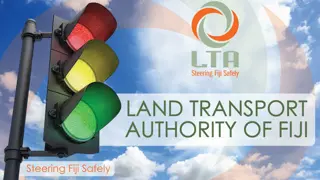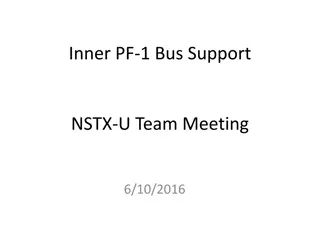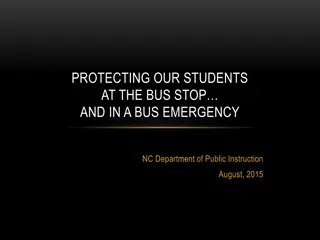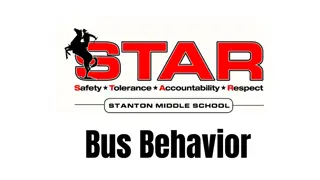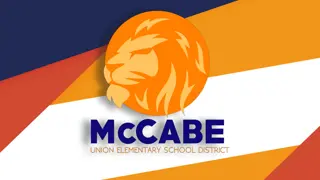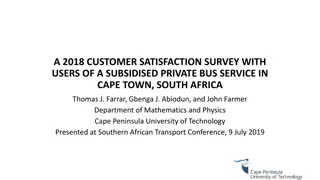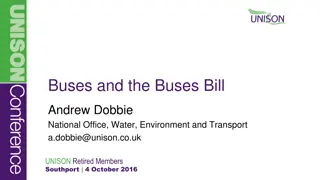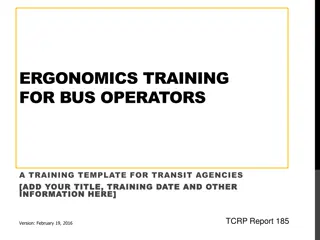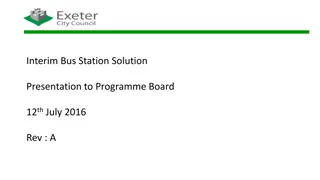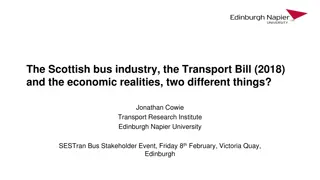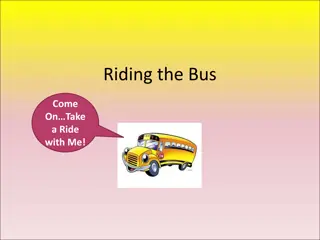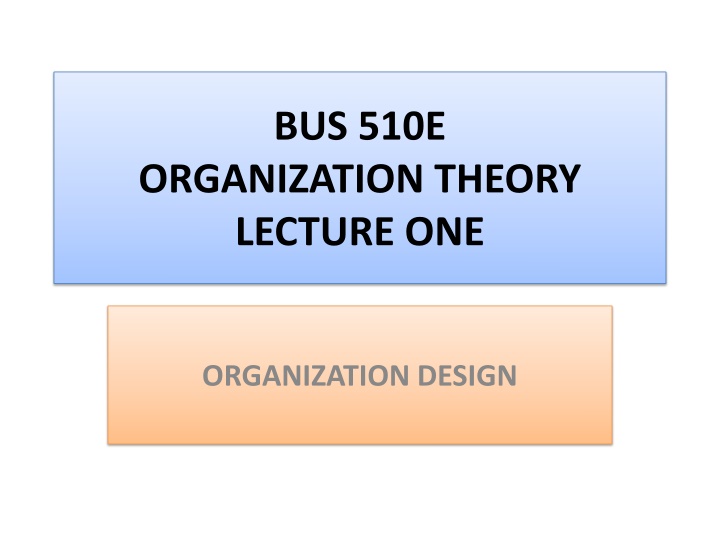
Organization Theory Lecture: Current Challenges and Trends
Explore the current challenges and trends in organization theory, including globalization, intense competition, ethics and the green movement, speed and responsiveness, the digital world, and diversity. Learn about how organizations are adapting to these challenges to stay competitive in today's rapidly changing environment.
Download Presentation

Please find below an Image/Link to download the presentation.
The content on the website is provided AS IS for your information and personal use only. It may not be sold, licensed, or shared on other websites without obtaining consent from the author. If you encounter any issues during the download, it is possible that the publisher has removed the file from their server.
You are allowed to download the files provided on this website for personal or commercial use, subject to the condition that they are used lawfully. All files are the property of their respective owners.
The content on the website is provided AS IS for your information and personal use only. It may not be sold, licensed, or shared on other websites without obtaining consent from the author.
E N D
Presentation Transcript
BUS 510E ORGANIZATION THEORY LECTURE ONE ORGANIZATION DESIGN
WHAT IS AN ORGANIZATION? Organizations Are 1. Social Entities that 2. are goal-directed, 3. are designed as deliberately structured and coordinated activity systems, and 4. are linked to the external environment. An organization has a means to achieve its end
CURRENT CHALLENGES 1 Globalization: With the rapid advances in technology and communications, the time it takes has been reduced. Markets, technologies, and organizations are becoming increasingly interconnected. So companies can locate different parts of the organization throughout the world: top leadership in one country, technical brainpower and production in other locales. Related trends are global outsourcing, or contracting out some functions to organization in other countries, and strategic partnering with foreign firms to gain a global advantage. 2 Intense Competition: This growing global interdependence creates new advantages, but it also means that the environment for companies had become extremely competitive. Therefore, whether how many market leaders of today will still be the market leaders five years now is questionable. In today s weak economy, companies in all industries are feeling pressure to drive down costs and keep prices low, yet at the same time they are compelled to invest in research and development or get left behind in the global drive for innovation.
CURRENT CHALLENGES 3 Ethics and the Green Movement: The government and the public require corporates and their employees to hold high ethical and professional standards. Following widespread moral lapses and corporate financial scandals, organizations are under scrutiny as never before. Moreover, people are demanding a stronger commitment by organizations to social responsibility, particularly when it comes to protecting the natural environment. Many companies are embracing the philosophy of sustainability, which refers to economic development that generates wealth and meets the needs of the current generation, while saving the environment so future generations can meet their needs as well. 4 Speed and Responsiveness: It becomes important to respond quickly and decisively to environmental changes, organization crises, or shifting customer expectations. Today, globalization and advancing technology have accelerated the pace at which organizations in all industries must roll out new products and services to stay competitive. Today s customers want products and services tailored to their exact needs and they want them now. Moreover, crisis management has moved to the forefront in light of devastating natural disaster and terrorist attacks all over the world; weak global economy, sovereign debt crises, growing unemployment, and weakening consumer confidence; widespread ethical scandals; and in general, an environment that may sift dramatically at a moments notice.
CURRENT CHALLENGES 5 The Digital World: Today s realm of the Internet, social networking like Facebook and Twitter, Blogs, online collaboration, Web-based communities, broadcasting, mobile device, You Tube-ing and Skype-ing caused the digital revolution, that changed everything in organizational design and operations. Emerging digital tools enable many employees to perform much of their work on computers, perhaps working in virtual teams and connected electronically to colleagues around the world. 6. Diversity: As organizations increasingly operate on a global playing field, the workforce as well as the customer base grows increasingly diverse. Many of today s leading organizations have an inter-national face. Moreover, managers in the United States realize the nation s domestic population is changing dramatically. About a third of current population growth in the United States is due to immigration, and immigration is expected to continue being a positive element in coming decades.
DEFINITION OF MANAGEMENT Management is the act of getting people together to accomplish desired goals and objectives using available resources efficiently and effectively. Management comprises planning, organizing, staffing, leading or directing, and controlling an organization (a group of one or more people or entities). Resourcing encompasses the deployment and manipulation of human resources, financial resources, technological resources, and natural resources.
INPUT-OUTPUT MODEL Organization Theory INPUT OUTPUT Organizational TRANS- FORMATION Human Resources Products Financial Resources & Raw materials Services PROCESS Information
PERFORMANCE Performance (Output) = Function (Input) where Input = Ability, Effort, Opportunity Average Productivity = Real Output / Real Input
BUSINESS MANAGEMENT VS. PUBLIC ADMINISTRATION BUSINESS ADMINISTRATION To Maximize Corporate Profits More Economics than Politics PUBLIC ADMINISTRATION To Maximize Services for Welfare More Politics than Economics
A Systems Approach to Management Environment (Global, Regional, and Local) Goals & Values Technology Marketing Structure Management Subsystem INPUT OUTUT Finance /Funding Personnel /Manning Interactions Interactions Feedback Operations
DECISION-MAKING PROCESS Define the Problem Collect Related Information Consider Alternatives Introduce Criteria Evaluation of Alternatives Choose the Best Alternative Supportive Actions for the Choice
A FEEDBACK CONTROL MODEL 2. Establish Metrics & Standards of Performance 1. Set Strategic Goals 3. Compare Metrics of Actual Performance 4. Take Corrective Action as Needed
CONTNGENCY VIEW OF MAGT The contingency view of organizations and their management suggests that an organization is a system composed of subsystems and delineated by identifiable boundaries from its supra-system. The contingency view seeks to understand the interrelationships within and among subsystems as well as between the organization and its environment, and to define patterns of relationships or configurations of variables. It emphasizes the multivariate nature of organizations and attempts to understand how organizations operate under varying conditions and in specific circumstances. Contingency views are ultimately directed toward suggesting organizational designs and managerial actions for situations.
INFLUENCE OF WAR: AN EXAMPLE Subsystems Virginia Food, Inc. (Retail) KA College, Inc. (Education) Goals and Values Reduced revenue and profit No change Organ Structure downsizing No change Personnel A certain percent of Layoff No change Finance Reduced budget No change Marketing & Tech. The change of sales strategy More aggressive strategy Command & Coop Speedy response and coop Speedy response and coop
PROBLEMS WHEN WORKERS ARE OWNERS 1. The risk that workers have too many eggs in one basket: if their employer goes bust they can lose their pensions as well as their jobs. 2. An Entrenchment problem: It can entrench bad management and undermine a company s long- term competitiveness. 3. Workers will not only toil harder if they get a slice of the profits, but will make sure that their colleagues do so too. However, company stock holders expected better benefits than the rest.
History of Management Thought Classification Main Concepts of Management Leading Theorists Early Management before Industrialization Industrial Revolution: The Protestant Ethic; The Liberty Ethic; and The Market Ethic Robert Owen Alfred Chandler Andrew Carnegie Management Thought Scientific Management Efficiency Organization Theory Frederick Taylor Harington Emerson Henry Fayol The Scientific Management Era The Hawthorne Studies Organization Theory: The Group Principle Motivation: Hierarchy of Needs Organization and Top Management Elton Mayo Follett and Barnard Abraham Maslow Ralph C. Davis The Era of Human Relations Newman and Terry Edith Penrose Douglas McGregor W. Edwards Deming General Management: Fayol s Heir Strategic Management Organizational Behavior and Leadership General Systems Theory The Modern Era
END OF THE LECTURE SEE YOU NEXT WEEK


